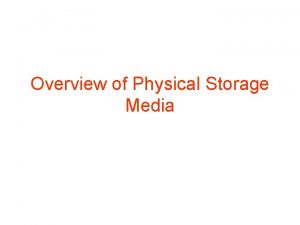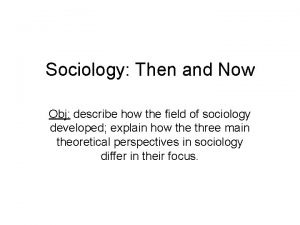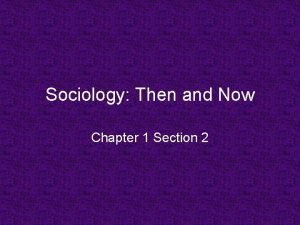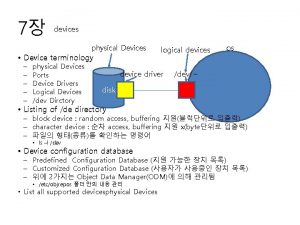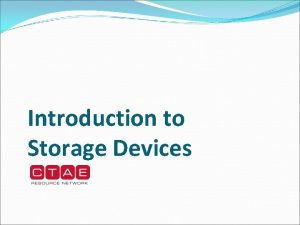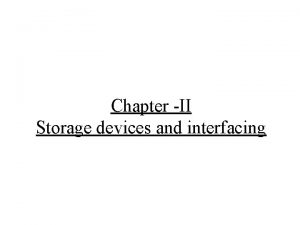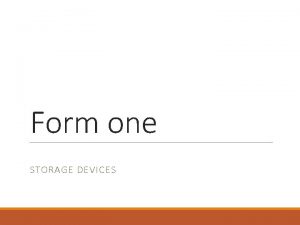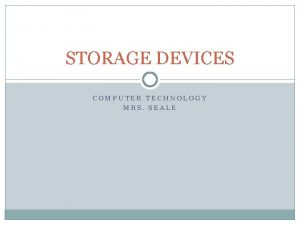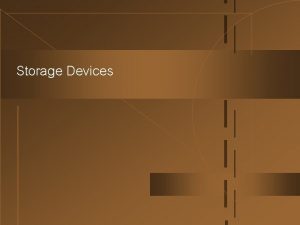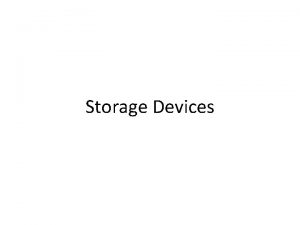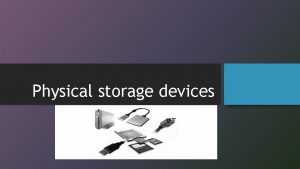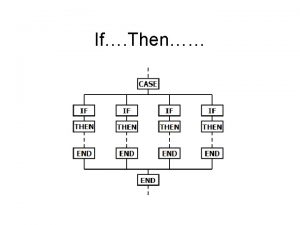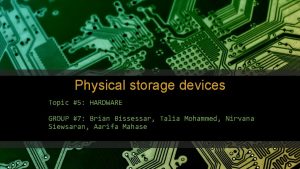Physical Storage Devices From Then to Now Topic














- Slides: 14

Physical Storage Devices From Then to Now Topic 5

Group Members and ID’s – Aaron Meighoo - 816000303 – Kimberly Holder - 816008846 – Darion Boodram - 816009607 – Hasani Goodman - 816013346 – Chioke Joseph - 816017925 – Ammaarah Khan - 816009351 – Ehssan Bunsee – 816010467

History of Physical Storage Devices – Data storage is the collective methods and technologies that capture and retain digital information on electromagnetic, optical or silicon-based storage media. – Storage is frequently used to describe the devices and data connected to the computer through input/output (I/O) operations, including hard disks, flash devices, tape systems and other media types.

Types of Physical Devices and How they Have Advanced – Magnetic Tape – Optical Storage – Magnetic-disk Storage – Flash Memory – Main Memory – Cache Modern Day Hard Disk Drive

Cache Memory – is a relatively small type of memory, but it is the fastest type of memory and as such it is also the most expensive form of memory. – Cache memory is typically integrated into the CPU chip or on a separate chip that has a separate bus that is interconnected to the CPU. – Early PC’s had cache from 16 KB to 128 KB of memory. – There are different levels of cache memory which are L 1, L 2 and L 3.

Main Memory – is the storage medium that is used for the data that is available to be operated on. it is where programs and data is kept when it is being actively used. – Main memory is sometimes called RAM, which means Random Access Memory. It is volatile which means that when the computer is turned off, the data is lost. –. Main memory has also become smaller in size, and faster in speed with types ranging from DDR 3, DDR 4. –. In the late 1990’s, RAM was advertised to be sold with a 320 mb hard drive and 8 mb of RAM for US$4400 as compared to 2018 where you can purchase a stick of RAM of 16 GB for US$ 105

Main Memory

Flash Memory – differs from main memory such that when the power is cut the memory is saved not lost. There are two types of flash memory – nand nor. – not lost. There are two types of flash memory: nand nor. – Nand has a much higher storage capacity and is very widely used for data storage in devices like laptops, cell phones and cameras – Flash memory is non-volatile and has a lower cost.

Flash Memory

Magnetic Storage Devices – Magnetic storage devices utilize an electromagnet called a read/write head that moves across the surface of a disk and records information by transforming electrical impulses into a varying magnetic field

Optical Storage Devices – CD-ROM (compact disc read-only memory) – DVDROM (disc read only memory) – data recorded on them can be read many times, but it cannot be changed or erased. – CD-ROMs can store up to 700 MB of data. – DVD-ROMs store up to 17 GB of data

Optical Storage Devices

Optical Storage Devices – CD-R (compact disc– recordable) is a “write-once” technology. – CD-RW (compact disc–rewritable) – DVDs come in two standards. The first (newer) format is the DVD + (DVD plus) standard. This standard employ two types of discs, DVD + R and the DVD + RW – DVD +R is a recordable format that enables the disc to be written to one time and read many times. The DVD +RW is a recordable format that enables the disc to be rewritten to many times – Blu-ray, also known as Blu-ray Disc, is the name of a next-generation optical disc format jointly developed by the Blu-ray Disc Association.

Magnetic Tapes – Good foreign backups but access is sequential
 Physical education now and then
Physical education now and then Physical storage media
Physical storage media Now i see it now you don't
Now i see it now you don't Sociology: then and now
Sociology: then and now Sociology then and now
Sociology then and now The seaside then and now
The seaside then and now Seaside holidays in the past
Seaside holidays in the past That was then this is now summary
That was then this is now summary Sarah e goode
Sarah e goode Dubai 1960 vs now
Dubai 1960 vs now Agriculture now and then
Agriculture now and then That was then this is now summary
That was then this is now summary Child labor then vs now venn diagram
Child labor then vs now venn diagram The seaside then and now
The seaside then and now Then and now grammar
Then and now grammar

